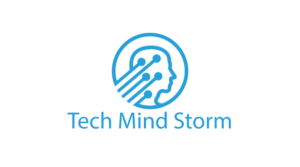In the world of modern technology, where connectivity and communication are paramount, networking emerges as a crucial idea that underpins the very core of the digital world. From its fundamental ideas to its real-world applications, networking has a big impact on how we communicate with computers, access information, and connect with one another. This essay investigates the meaning of networking, examines its depths, and offers insights into its many facets.
The concept of networking covers far more than just physical connections between objects or people; it also refers to the complex web of connectivity that underpins the entire digital ecosystem. Networking is the foundation of our technologically evolved world, whether it be due to the easy interchange of information, the complexities of data transfer, or the collaborative possibilities it enables.
Networking Concepts: “Networking Kya Hai”
“Networking Kya Hai?” This query captures the interest that exists in the idea of networking across multiple linguistic contexts. In its simplest form, networking is the process of affixing connections between objects, systems, or people in order to promote the transfer of data and resources. It entails creating routes that make it possible for data to move between points in an effective manner. These routes might be virtual or physical, like the network of internet nodes that are connected by cables and routers.
A variety of technologies, protocols, and procedures known as networking provide seamless communication. The basic objective is the same whether it’s local area networks (LANs) in a small area, like your house or workplace, or wide area networks (WANs), which stretch beyond geographical locations: to create a trustworthy route for the exchange of data.
The Complexities of the Concept of Networking
Networking is a notion that, at its core, goes beyond the physical elements and explores the world of protocols, standards, and topologies. The languages that devices speak when communicating with one another are networking protocols. These protocols specify the format, transmission, and reception of data, assuring compatibility and effectiveness. While standards guarantee consistency across all systems and devices, they enable seamless integration.
A network’s topology outlines the structure of the network and how devices are connected to one another. Each topology has a distinct function depending on variables like scalability, dependability, and cost-effectiveness, whether it be the star topology, where devices radiate out from a central hub, or the mesh topology, where devices are interconnected for redundancy.
As a Collaborative Tool, Networking
In addition to bridging the gap between devices, networking also fosters interpersonal cooperation. Social networking sites and online communities have revolutionized how we communicate and share. The idea of networking has expanded into the human sphere, from professional platforms like LinkedIn that encourage job progress through networking to social media platforms that allow friends and family to stay connected over distances.
Networking as a Concept Reading Answers” is a networking learning resource.
Resources abound for individuals looking to understand the complexities of networking. The field of computer networking offers a wealth of knowledge, whether you’re a student wanting to grasp the fundamentals or a professional looking to expand your experience. The learning possibilities are numerous, ranging from textbooks that explore networking fundamentals and protocols to internet forums where professionals offer their ideas.
Finding solutions is only one aspect of “networking as a concept reading answers”; it also entails learning about actual situations. The practical implementations of networking ideas can be better understood by learners through case studies, troubleshooting conversations, and real-world examples. This method fills the gap between theoretical understanding and application in the real world.
Information Seeking: “Computer Networking PDF”
We have instant access to information in the digital age. A quick search for “computer networking PDF” can turn up a wealth of information, from thorough manuals to specialist documents. These PDFs cover a broad range of subjects, from networking introductions to in-depth studies of new developments like cloud networking and the Internet of Things (IoT).
Conclusion
The concept of networking goes well beyond its actual applications. It weaves together collaboration, technology, and learning into a rich tapestry that characterizes the modern period. Networking has a huge impact on how our environment is shaped, from the fundamental ideas that underlie data transmission to the collaborative power it grants to individuals. Therefore, networking continues to be a complex and essential part of our digital existence, whether you’re looking for solutions to technical questions, delving into its deeper significance, or just awestruck by its influence.

